AUTHOR OF THE PROJECT
Juan Carlos Derbartanian
Contact details: ► Mobile: (+54 9 11) 5574 0297 ► E-mail: juanvolker59@gmail.com ► Autonomous City of Buenos Aires – Argentina
International Recognition: ► Bronze Medal at the Geneva Inventions Switzerland - 2021, the most important exhibition of inventions in the world.

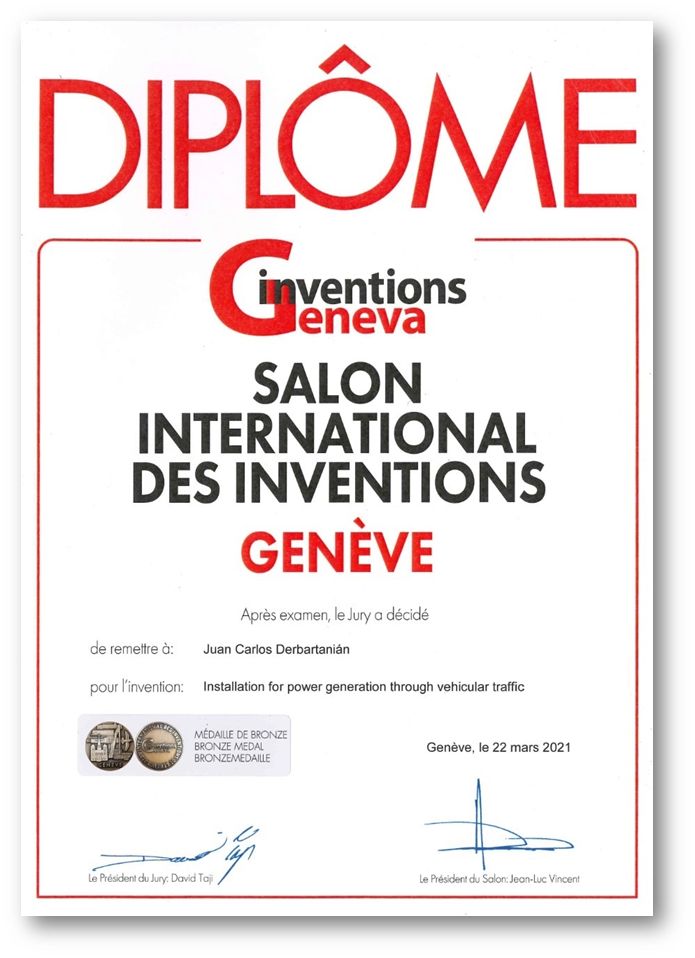

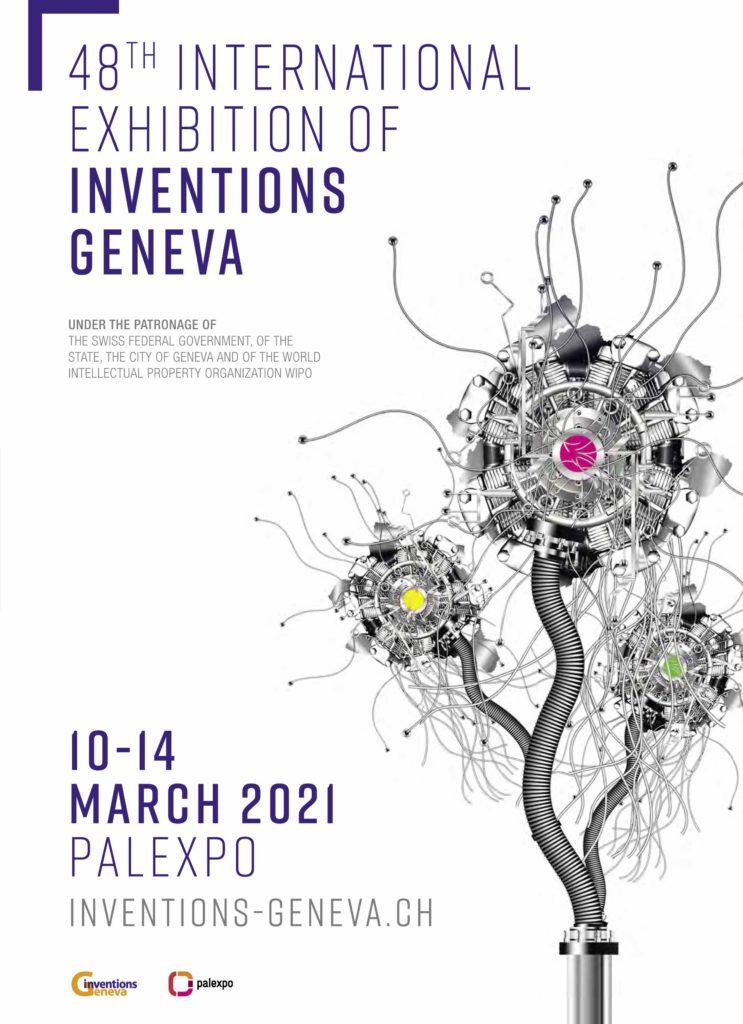
Objectives
► To develop the technology for the generation of sustainable urban energy. ► Transfer Know-how and patent rights to companies or national states.
Scope
► System implementation in urban transit spaces, and accesses to cities: Vehicular traffic. ► Local and autonomous generation of energy without emissions in cities. ► Social, environmental and economic benefit, enabling the replacement of conventional energy generation.
Level of Development
► Conceptual Analysis ► Performance Evaluation ► Functional Physical Model (Ongoing)
Degree of Protection
► Copyright ► Invention Patents within the year of international priority: Argentina, USA, and the European Union.
PROJECT BRIEF
► CITIES THAT PRODUCE THEIR OWN SELF-MANAGED ENERGY ► INTEGRAL PROJECT FOR THE GENERATION OF SELF-SUSTAINABLE CLEAN ENERGY IN THE CITY. ► PRELIMINARY ANALYSIS OF AN URBAN ENERGY GENERATION SYSTEM THROUGH INTELLIGENT ROAD PLATFORMS FOR CAPTURING AND TRANSFORMING VEHICULAR KINETIC ENERGY.
SEE MOREDevelopment
NEW SYSTEM FOR CLEAN AND SELF-SUSTAINABLE URBAN ENERGY GENERATION.
► The descriptive analysis developed here synthetically tries to fulfil the objective of making known in broad outline the benefits of a self-sustainable system for generating electricity without emissions at all and with costs close to zero, whose installation will be located in the same cities where this energy is consumed.
► In this descriptive work we develop the most relevant aspects, leaving the technical details of engineering for a later elaboration and detailed analysis, for the instance immediately prior to manufacture.
► The project refers to the development of an urban system that enables the generation of electricity in a CLEAN, SELF-SUSTAINABLE and LOCAL way, which would be the possibility of the urgent replacement of conventional generation systems, whose high rates of CO2 emissions are negatively affecting the atmosphere of our planet in a way that, if not reversed soon, could be difficult to return. Although the climate and environmental issue has been from the beginning the focus of our work over the last 10 years developing this self-sustainable engineering project, no less important has been the collateral benefit of proposing a system of energy production in the same city where it is consumed, avoiding the enormous costs of moving it, as well as the use of something that abounds NATURALLY in every city, as is the kinetic energy / vehicular potential, which until now has been totally untapped.
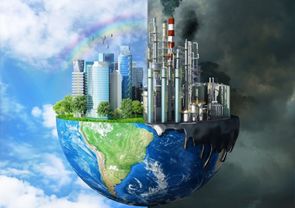

ADJACENT COLLATERAL BENEFIT
► It is the use of an abundant resource that is naturally and daily available to us in all cities, and that if it is not used by means of an intelligent technical transformation, this resource would be lost without any benefit to urban life. ► The present project consists of intelligent modular platforms that capture the kinetic/potential energy of vehicular traffic, transforming this capture energy through the synergy of internal, hydraulic and mechatronic mechanisms specifically associated with electrical energy, which can be led directly to the national electricity grid.
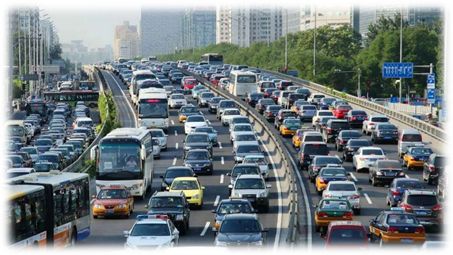
Execution
STRATEGIC LOCATION IN THE URBAN AND SUBURBAN CONTEXT
► The implementation of the platforms can vary according to the specific use required, such as on speed bumps or overpasses, at road crossings and urban streets, in the adjacency of schools or hospitals, as well as in the accesses to ports with large vehicles (here the energy production would be much higher, being able to multiply by 3 times the interurban generation). We would also have the platforms at motorway toll booths or at bus stops, where due to the vehicle weight factor similar to large trucks in ports and also for the frequency of buses, in addition to a location with little urban intervention, we agree that it would be one of the ideal areas for large amounts of interurban energy generation on a regular and ascending way.
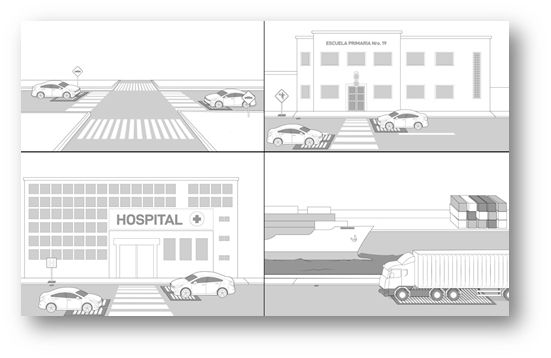

REGARDING THE ENGINEERING PRINCIPLES OF THE OLEO-HYDRAULIC-MECHATRONIC SYSTEM
► In order to describe this system in a functional way, we would begin by stating that it is a series of oleo-hydraulic, mechanical and electronic processes, strategically associated to form a specific synergy whose purpose is the transformation of a kinetic force/vehicular potential into electrical energy. ► For this purpose, a platform has been developed consisting of a surface level that will have the primary contact with the vehicle's wheels, and another lower section where the mechanisms transforming the force received from the upper section are located.
URBAN AND/OR SUBURBAN INTERVENTION
► Let us bear in mind that each module generates a certain amount of electrical energy when a vehicle passes over it, i.e. the more platforms, the greater the production, and the greater the energy produced the heavier the vehicle and/or the more traffic passes over the platform, since it is through vertical contact and the pressure exerted by the vehicle on the transversal mobile strips that enables this weight in movement to be transformed into electricity by the platform's internal system. More platforms, more energy; more weight, more energy; more traffic, more energy. These are the 3 basic external parameters that will define the amount of energy generated, just like a windmill: more wind, more energy; or a solar panel: more solar intensity, more generation.


NEUTRALITY IN CARBON AND METHANE EMISSIONS
► Another ecological and environmental aspect of the greatest relevance is the capacity of the system considered here to produce large amounts of urban energy in a COMPLETELY clean and RENEWABLE way. which will result in the capacity to replace the production of conventional energies. Therefore, we would avoid the emission into the atmosphere of hundreds of millions of tons of greenhouse gases, carbon and methane, making it possible to meet the proposed goals for an urgent reduction in emissions by 2030, within the framework of the agreements signed in Paris 2015 and recently ratified at the Glasgow climate summit COP26 2021.
SELF-SUSTAINING CITIES
► In order to dimension the benefit of the present urban energy sustainability project, it is worth relating the constantly rising cost of emission rights, which already stands at 60 euros per tonne of carbon, with the savings that would mean that each city could dispense with fossil energies transported from outside the suburbs and could self-supply and manage itself locally through an abundant source of 100% CLEAN, RENEWABLE and ZERO COST energy.
BALANCING SOURCE FOR GREEN ENERGIES - WIND AND SOLAR
► One of the main constraints that could delay the urgent challenge to meet the proposed energy transition goals is the current dependence on conventional fossil fuels of gas, oil or coal. ► The central issue is the climate unpredictability to which the two main green energies, wind and solar, are subjected, and on which we rely to fulfil the international commitments we have made. ► It is because of this lack of continuity that at times of low green generation, the undesired "help" from conventional energy sources is required, delaying the transition to a 100% renewable energy model. ► This is where the strategic relevance of this project grows, where urban and local kinetic generation, without being affected by climatic variables, would be able to complement and sustain the other two renewables in times when their production drops, achieving a better balance in the supply of green energy. In addition, it would save millions of dollars by dispensing with polluting fossil fuels that are generally imported, such as gas, oil and coal, which in spite of the ecological and economic damage already known, seriously compromises the administration of energy as a strategic resource of national sovereignty.
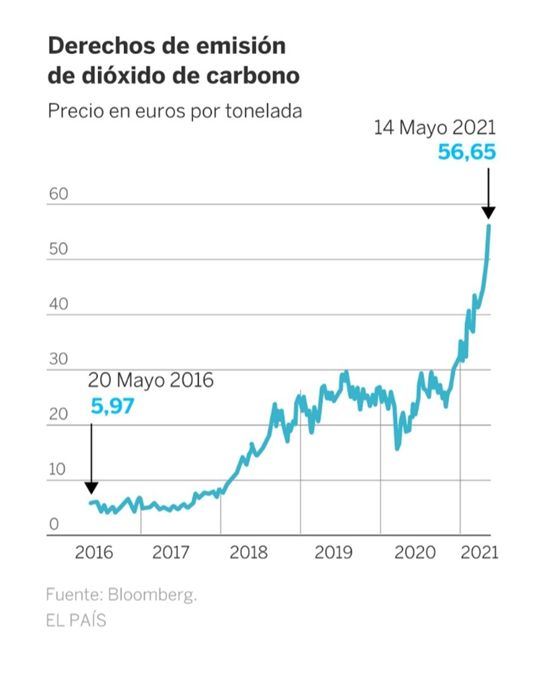
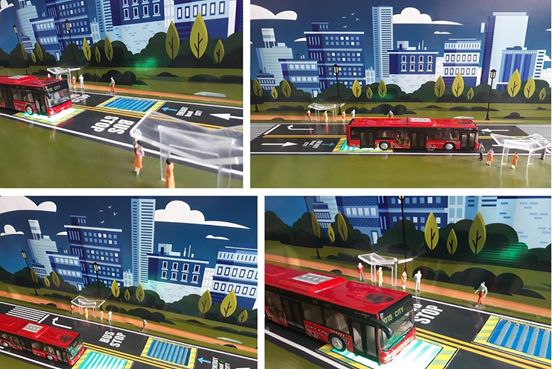
SUSTAINABLE MOBILITY
► Mobility will be another consideration of what will be one of the greatest challenges related to the world's energy matrix, which is already in the horizon. ► In the European Union, it is projected by 2035, that the total electrification of the vehicle fleet, which will amount to more than 300 million vehicles, will be achieved. ► Assuming that the electrical reconversion will be progressive, however, huge amounts of RENEWABLE energy will be required to supply the new electric mobility, just take into account that each electric vehicle could consume on average between 13 kWh and 20 kWh per day, so we would face the need to triple the amount of RENEWABLE energy currently generated.
REPLICATION AND SCALING
► The replication and scaling of the platforms at a national level could totally replace the need for energy production by conventional means with its consequent atmospheric emissions.
PARADIGM SHIFT
► Today we are finally on the verge of reversing the old paradigm of the post- industrial revolution city equals environmental problem, using an adjacent and everyday natural resource such as vehicular traffic, an abundant and sustainable source of green energy. ► This is how we will see our cities evolve ecologically from being the problem to being a fundamental part of the energy solution that our planet needs without delay. ► This is how we will see our cities evolve ecologically from being the problem to being a fundamental part of the energy solution that our planet needs without delay. ► Today our cities have the tools and the historical moment in which leaders and governors must decide whether to continue having the environmental problem while waiting for solutions brought from outside, or if we make the cities themselves an indispensable part of the global ecological solution ► The future is electric, green and renewable, but that future has already arrived, and today is the day and time to engage decision-makers to show whether they are truly up to the task. Inconsequential discourse and fossil fuels are the past; today we must look carefully and respectfully to nature as the source of creation that shows us its capacity to sustain life for millions of years, imitating its vital processes, rethinking and intervening in our cities from an intelligent use of our daily and adjacent urban energy resources at our disposal.

Connect
Send us your query via email and we will contact you as soon as possible.

